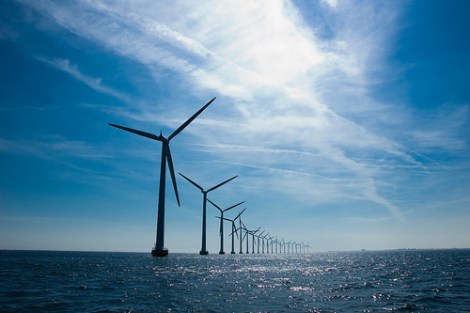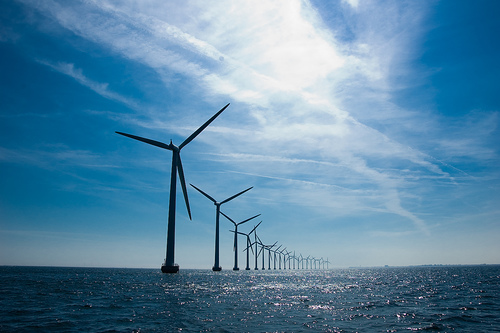So there’s this new television show on NBC called Power Off or something that’s been heavily advertised during the Olympics. (That’s not it’s name, but I can’t be bothered to look it up. If you want to, go nuts.) The premise appears to be that the world loses all of its power. It’s not clear why. So everyone runs around fighting with bows and arrows, because I guess guns use electricity now.
I raise that TV show both to make fun of it and to assuage any concerns that it might have prompted. Don’t worry, America. We’re getting better and better at making electricity.

Not sure what this image is, but it looks nice.
Example 1. California, a largish state west of where you are unless you’re in California itself or in Oregon or Washington, is now generating 20 percent of its power from renewable sources.
In its latest quarterly report, the California Public Utilities Commission (CPUC) said that the state met 20.6 percent of its electricity demand with renewable sources — including wind, solar, and geothermal — during 2011, up from 17 percent in 2010. In 2012, the report says, the state is on pace to far surpass that level. According to the CPUC report, 2,871 megawatts of energy capacity from clean sources has been added statewide since ambitious clean energy standards were enacted in 2003, and another 3,000 megawatts are expected to be added during 2012.
That’s good! Less of a need for Californians to stock up on crossbow bolts, I guess.
Example 2. According to the American Wind Energy Association (AWEA), the U.S. now has a wind-power generating capacity of 50 gigawatts.
The 50 gigawatts (GW) online today means that U.S. wind turbines now power the equivalent of nearly 13 million American homes, or as many as in Nevada, Colorado, Wisconsin, Virginia, Alabama, and Connecticut combined. In addition, 50 gigawatts (GW) of wind power capacity:
- Represents the generating power of 44 coal-fired power plants, or 11 nuclear power plants.
- Avoids emitting as much carbon dioxide as taking 14 million cars off the road.
- Conserves 30 billion gallons of water a year compared to thermal electric generation, since wind energy uses virtually no water.
AWEA also made an infographic, but infographics are like the NBC shows of web information-sharing: over-designed, not very interesting, almost always lame.
The milestone (perhaps not coincidentally!) comes during a key discussion of wind power, as the presidential candidates deal with the ramifications of Romney’s decision to oppose a key wind-industry tax credit. Both candidates are making stops in Iowa, a key wind-producing state — and Romney’s not getting a great response.
Example 3. Walmart will be generating 90 megawatts of solar via rooftop panels by year-end.
Wal-Mart, with 4,522 stores in the U.S., expects to have 1,000 solar-powered locations by 2020, Marty Gilbert, director of energy at the Bentonville, Arkansas-based company, said in an interview. The retailer gets about 4 percent of its power from renewable sources and plans to install another 100 solar systems by the end of 2012, demonstrating that renewable energy is economically viable to businesses.
Whatever the cause of the power failure on that NBC show, you can rest assured that Walmart stores with solar panels will still be operational and, conveniently, selling all sorts of weapons.
I guess what I’m trying to say is: America? We’re going to be OK. Also: NBC has terrible TV shows.




